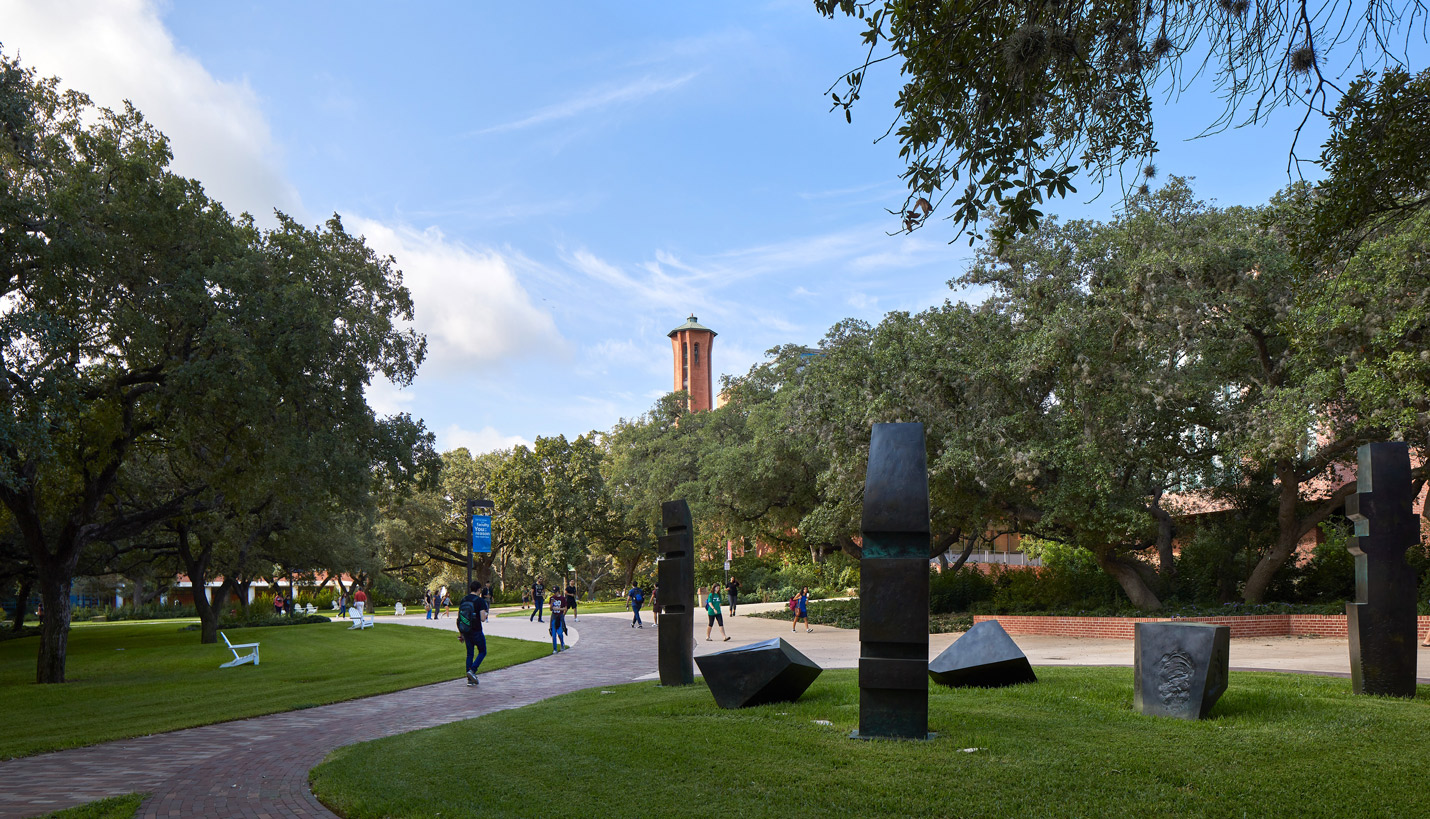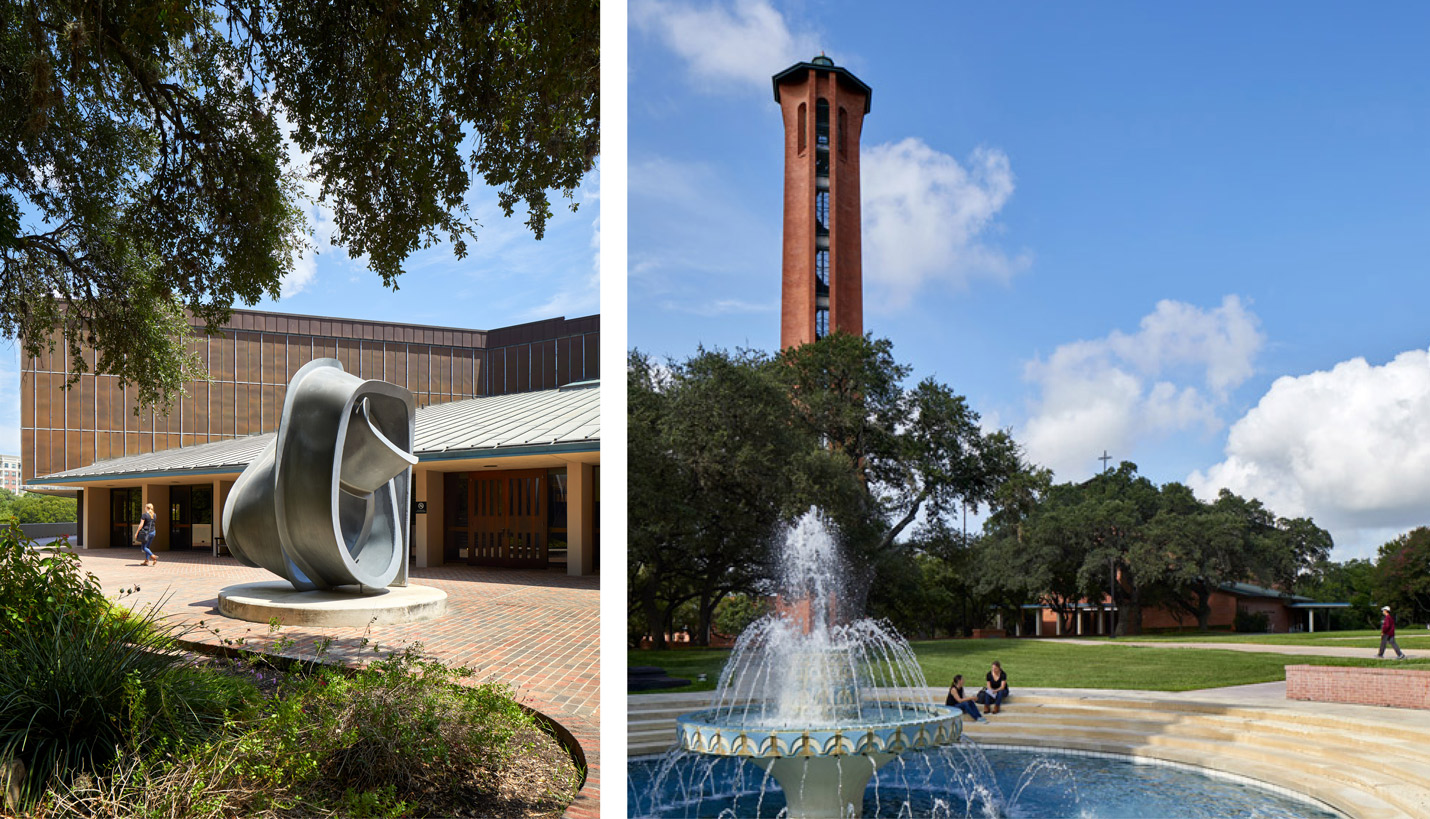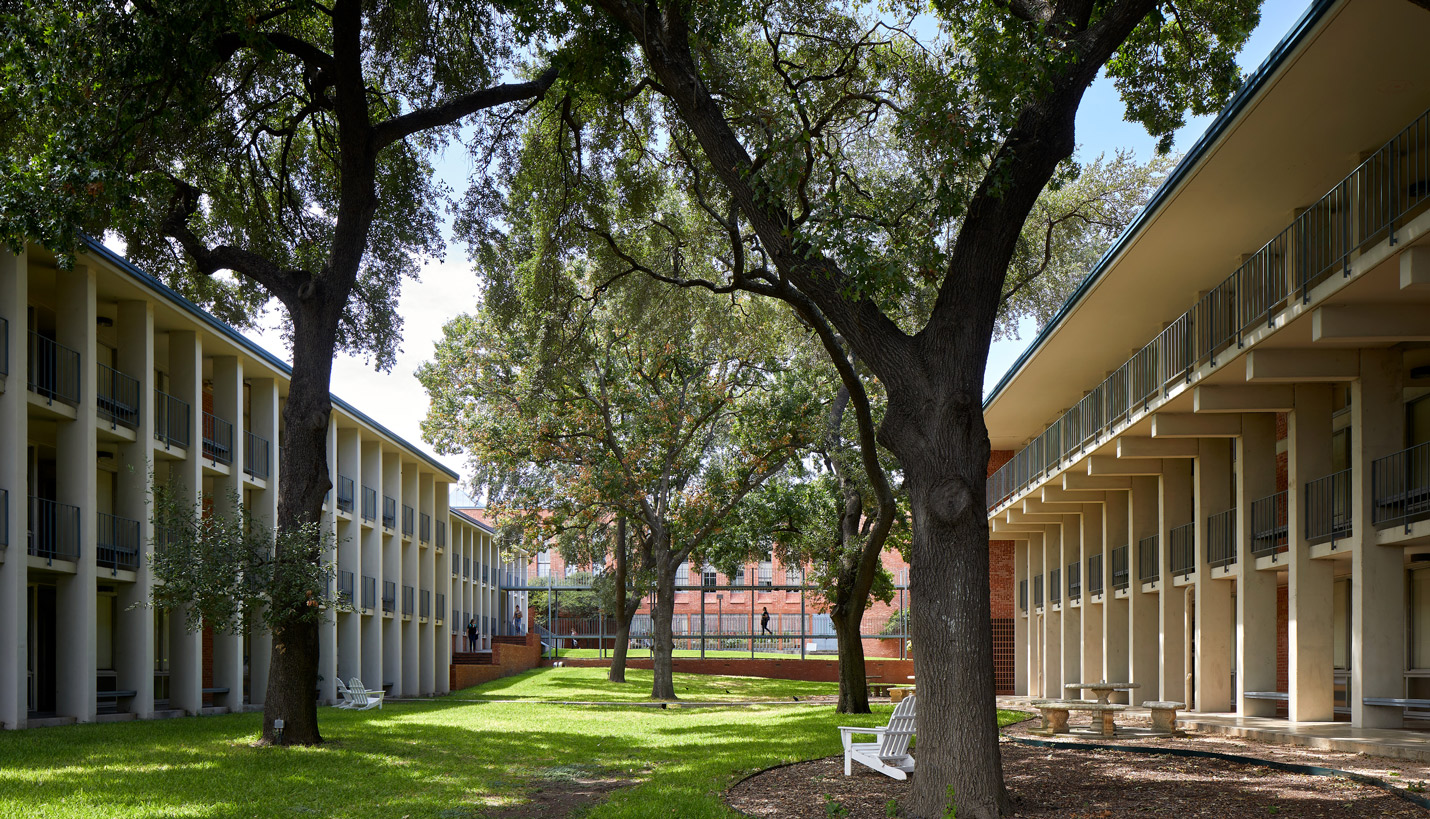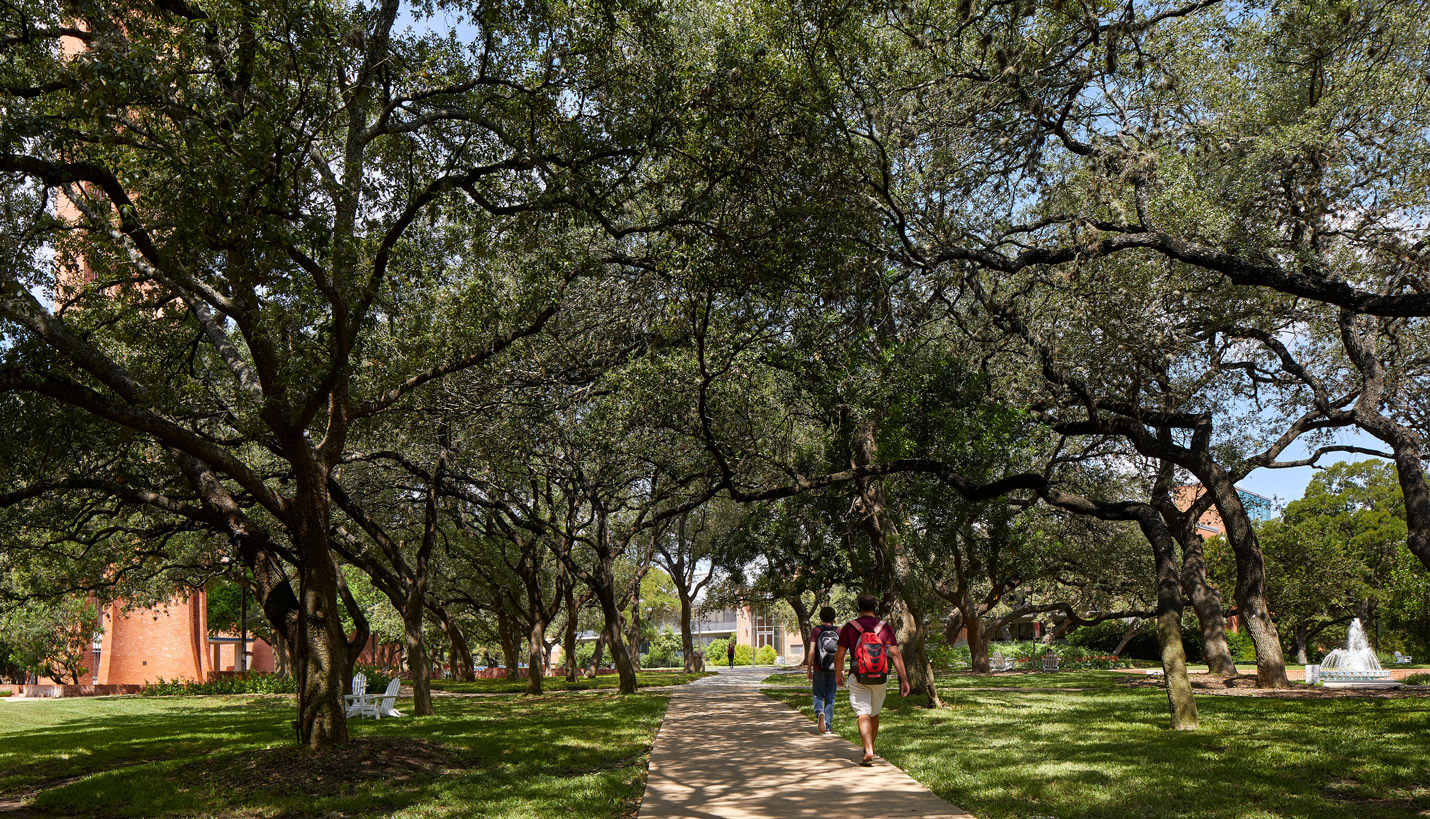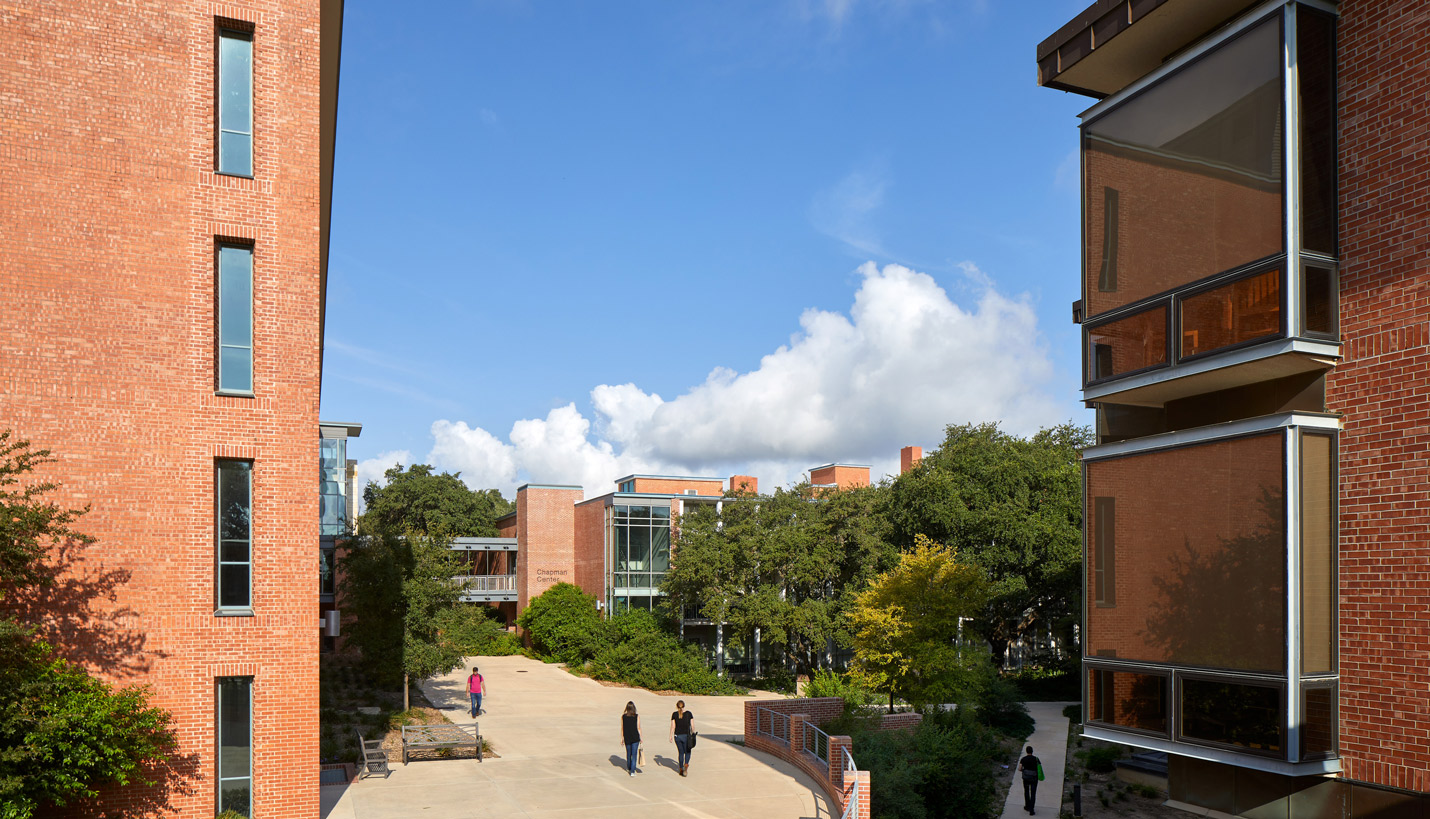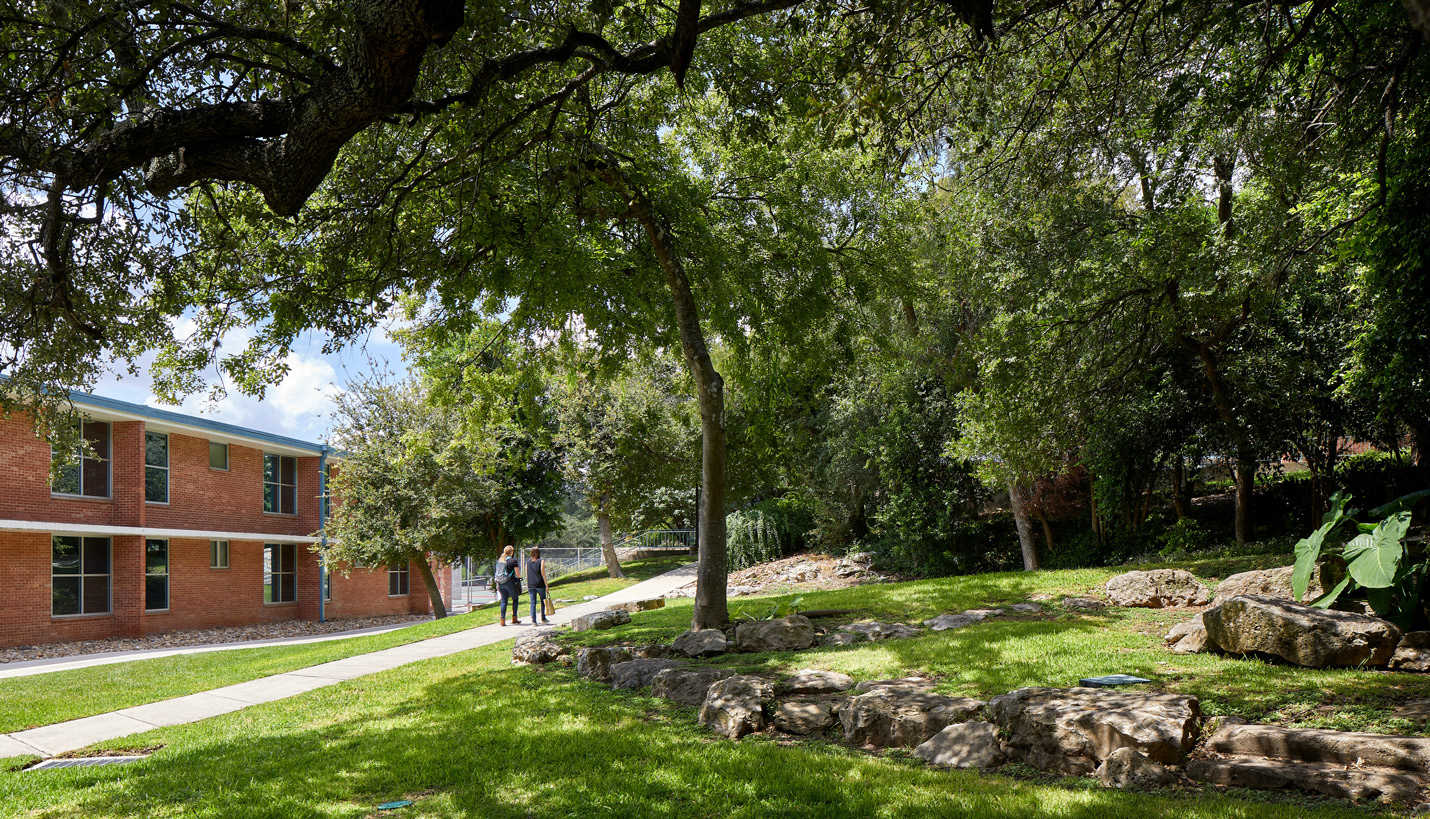Trinity University Listed on National Register of Historic Places
The National Park Service has recognized Trinity University as a significant example of regional modernist architecture, and it is now listed on the National Register of Historic Places. Designed by Texas architect O’Neil Ford, the campus is perched on a bluff covered by oak trees overlooking San Antonio, Texas. The historic district encompasses 26 Bridgeport ‘pink’ brick and concrete buildings that make up the core of the Ford-designed campus constructed from the 1950s through the 1970s.
Trinity University is now the only designated modernist historic district on a college campus in Texas, and one of just three in the country.
An early modernist who took into account a building’s everyday use, site context and the Texas landscape, Ford’s unique regionalism integrated modern construction technologies, historic architecture and craftsmanship. Ultimately his buildings are designed for and are the products of the Texas climate. The Trinity campus is a significant example of his style as well as his early adaptation of lift-slab construction.
Page Senior Principal Larry Speck emphasizes the importance of the recognition. “I have personally hoped for this kind of designation ever since I wrote an article for "Architecture" magazine on the Trinity campus 35 years ago,” he says. “It has long deserved more national attention as one of the landmark works of architecture in the U.S. of the mid-20th century. The stature of its architect, the consistently high quality of design work over decades and the intact nature of much of the work now are all extraordinary distinguishing features that combine to make Trinity University a premier architectural ensemble that will now be preserved in the foreseeable future.”
The listing of the campus on the National Register of Historic Places is also important for San Antonio as it sheds a new light on a city known for its preservation and celebration of colonial architecture. Organizations across Texas are working toward raising awareness and protecting architecture from the mid-20th-century era and this step will be a positive milestone.
Over a year in the making this designation is part of Trinity’s Page-designed campus Master Plan which was approved in Spring 2017. Page was tasked with honoring and preserving the work of renowned architect, O’Neil Ford while embracing the future in the plan.
Page Senior Associate Ryan Losch, who was the project manager for the Trinity University Campus Master Plan, describes how the university came around to the idea of pursuing a historic district. “It was a joy to witness the evolution of thinking by the campus community on the significance of their campus and its position in architectural history,” he says. “It was clear through the process that the users appreciate the uniqueness of the campus character as one of the key components that makes the institution special.” Page engaged ARCHITEXAS to carry out the historic designation nomination process.
To listen to a recent podcast by Trinity University about its historic campus, click here.
06/04/2018
People
- Daniel Brooks
- Jamie Flatt
- Elizabeth Foster
- Daniel R. Kenney
- Ryan Losch
- Philip Perlin
- Lawrence W. Speck
- Diana Su
- Brooke Taubenkraut
Related Posts
- A Mid-century Modern Masterpiece: Trinity University's Campus Master Plan
- Overview: Trinity University Master Plan
- Signed Into Law: New University of Houston Medical School
- Brainy Building
- A Milestone in Meeting Future Workforce Needs
- First Step in Welcoming Students
- New Student Facilities Open In Time for Fall Semester



